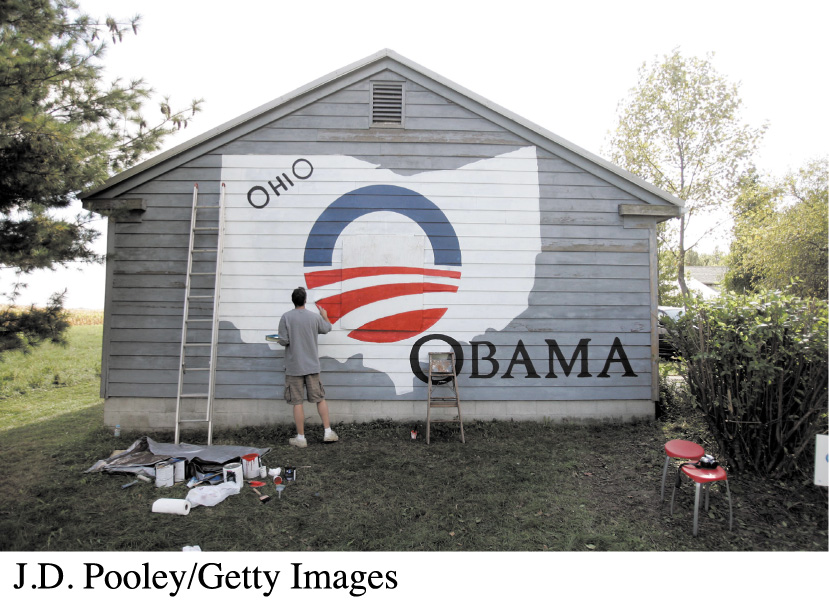Advertising in a Democratic Society
Advertising has had both creative and destructive impacts on our democratic society. With its ability to “produce” not products but actual consumers, it became the central economic support system for American mass media industries, powerfully fueling our economy. Yet in creating a consumerist society, the ad industry has also widened divisions between those who can afford to buy all the alluring products it promotes and those who cannot (or, alternately, those who go into debt buying the alluring products on credit). When some people can participate in an economy and others are unable to, democracy is undermined. Moreover, advertising’s ubiquity intrudes on our privacy and subjects us to corporate efforts to gather our personal information (such as income and spending habits).

Equally worrisome, fewer and fewer large media conglomerates are controlling an increasing amount of commercial speech, especially in mainstream, traditional media. This raises the question of whether we’re getting all the information we need to make well-reasoned choices—a key characteristic of any democratic society.
Advertising’s role in politics offers an apt example. Since the 1950s, political consultants have adopted market-research and advertising techniques to “sell” their candidates to the electorate. Political advertising, the use of ad techniques to promote a candidate’s image and persuade the public to adopt a particular viewpoint, is the most popular form of this. Many political ads are shown on television in the form of thirty-second spots paid for by candidates from the two main parties (or largely unregulated political action committees and Super PACs, made legal by the 2010 Supreme Court case Citizens United v. Federal Elections Commission). The Citizens United decision is already having a huge impact on political ad spending, which topped $6.28 billion in all races in 2012.7 Even more disturbing, the political network run by Charles and David Koch, conservative oil tycoons and longtime opponents of campaign disclosure laws, promised in early 2015 they would spend almost a billion dollars on the 2016 elections (they spent $400 million in 2012), which is on par with the spending of the national Republican and Democratic parties.8
One result of this is that only very wealthy candidates, or those with the wealthiest patrons, can typically afford these expensive promotional strategies. Thus, citizens who rely on television for their information don’t get a complete picture of the options available and may never learn about obscure but qualified third-party candidates who can’t afford to pay for TV spots. The present political environment, in which the most affluent can flood the commercial media with their paid messages, has become a situation in which free speech really isn’t free.
Moreover, critics have raised probing questions about the unintended consequences of political ads aired on television. For example, can serious information about complex political issues really be conveyed in a thirty-second spot? If not, viewers aren’t getting a full understanding of the issues and can’t make informed voting decisions. And do repeated attack ads, which assault another candidate’s character, undermine citizens’ confidence in the electoral process? If so, people may stop voting entirely—a really bad thing for a democracy. As it is, about 62 percent of eligible voters turned out in the 2008 national election, which means that 38 percent of us chose not to vote, and that was the best turnout for decades. But that didn’t help in 2014, when only about 36 percent of voters turned up for the midterm (no presidential race) election, the lowest turnout for a national election since 1942.9
Political ads most often appear during traditional televised commercial breaks, but other forms of advertising can be more subtle, especially in the digital world of promotion-paid Twitter accounts, product placement, and ads woven into search engine results. As advertising becomes more niche targeted, it’s important for citizens to remain media literate about how and when they’re being targeted as consumers. Thus, we need to be aware that simple activities in our daily lives—such as clicking “Like” on a Facebook page, searching on Google, or shopping on Amazon—are also part of the data-collection system that profiles our behavior and targets us with ever more advertising.
Despite these and other concerns about advertising’s potential negative consequences for our democracy, it maintains its hold on American culture—for several reasons. Without advertising, many mass media industries—television, the Internet, movies, magazines—would have to entirely reinvent their business models, as newspapers and magazines are doing right now in the face of losing so much of their ad revenue sources over the last decade. Leaders in these industries continue to embrace advertising as an economic necessity. Consumers themselves hold conflicting views of the ad industry: Some dismiss advertising as trivial and ineffective. These individuals don’t typically support strong monitoring of the industry. Others find ads entertaining, decorating their rooms or clothing with their favorite product posters or company logos and happily identifying with the images certain products convey. They, too, remain oblivious to advertising’s less-than-positive effects on our society. Advertising can be enjoyable—think of the viewers who watch the Super Bowl to see new ads that are often hyped just as heavily as the products they hawk, or even the game itself—but if we consider it just entertainment, we misunderstand its ultimate purpose.
What does all this mean for advertising’s future in the United States? As with any other mass medium, it’s important that we all remember what advertising’s purpose is, understand how it both benefits and costs our society, and “consume” commercial culture and its ads with a critical eye.
Think about it: In what ways are our own behaviors, values, and decisions—in all aspects of our life—affected by advertising? How might we consume and respond to ads more critically? And in what ways could we all participate in efforts to monitor the advertising landscape?